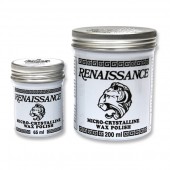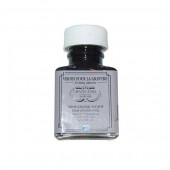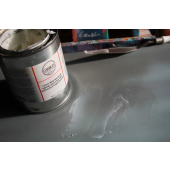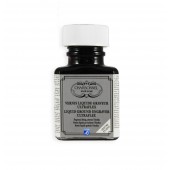Search results for 'wax varnish'
-

Renaissance Wax
Starting at: £10.10
Used by restoration specialists to revive and protect furniture, leather, paintings, metals etc. Freshens colours, imparts soft sheen. Very long shelf life. (approx 20 years) as long as it is not exposed to heat. Learn More -

Charbonnel Liquid Siccative Varnish 75 ml
£11.60Charbonnel Etching Ground 75 ml Liquid Siccative Varnish. Beeswax, bitumen, ketone thinner. Liquid retouching ground which should be applied cold. Hard, with satin opaque finish. Learn More -

Gamblin Cold Wax Medium
Starting at: £12.00
* Only available online.* Cold Wax medium is made by Gamblin. They say:
"Cold Wax medium is made from naturally white, pure beeswax. Formulated to knife consistency, Cold Wax Medium makes oil colours thicker and more matte. Cold Wax Medium can be used to make Gamblin mediums and Gamvar more matte. It can also be applied alone as a matte varnish."
Please see below for more information.
Learn More -

Charbonnel Ultraflex Liquid Ground
Starting at: £15.80
Judea bitumen, essence of turpentine, wax. Quick drying with transparent velvety finish. Apply cold with a supple brush. Learn More -

Casein Lactic
Starting at: £18.30
Casein is a protein derived from dried milk, which has been used in painting since ancient times. It can be combined with Ammonium Carbonate to form an emulsion, which acts as a durable, non-resoluble binder for pigments, producing a matte, fast-drying paint, similar in appearance to egg tempera. We use casein as a binder for our L. Cornelissen & Son Pigment Colour Charts, as it is a medium that clearly showcases the characteristics and behaviour of each pigment in its pure form. Casein paints can be applied in thin layers to watercolour paper, but would require a more rigid support, such as a gesso panel, to be applied thickly, as the comparative inflexibility of the paint layer means that it can be prone to cracking. Subsequent layers of paint should be more diluted to aid adhesion, and impasto effects are not recommended. It is possible to varnish casein paintings using an acrylic or damar varnish to obtain a glossy surface if desired, although this is not a necessary step. Casein can also be used as an ingredient in gesso, and is a suitable binder for fresco secco techniques.
Some pigments may require a wetting agent in order to fully disperse within the binder, in which case alcohol may be used.
Learn More



